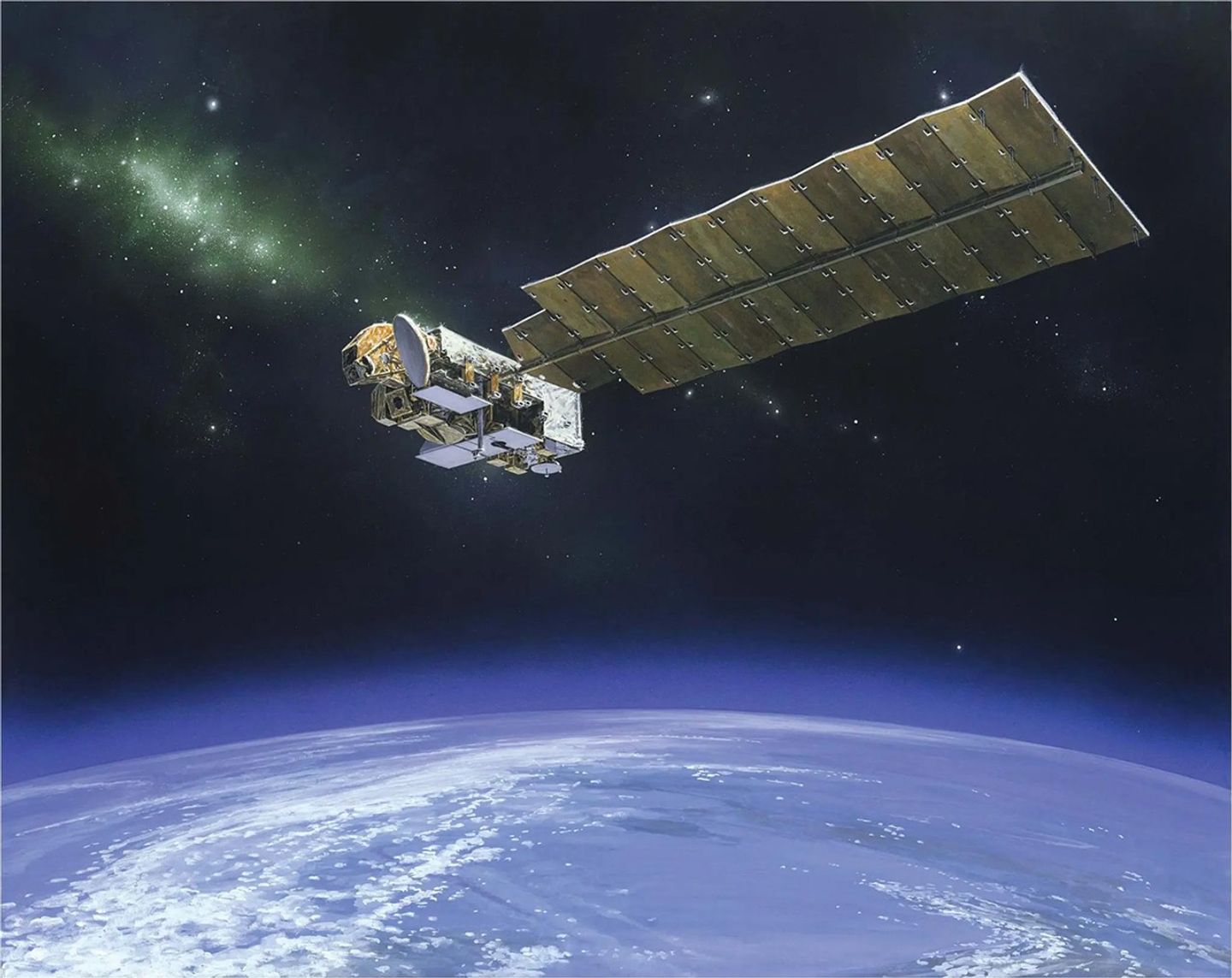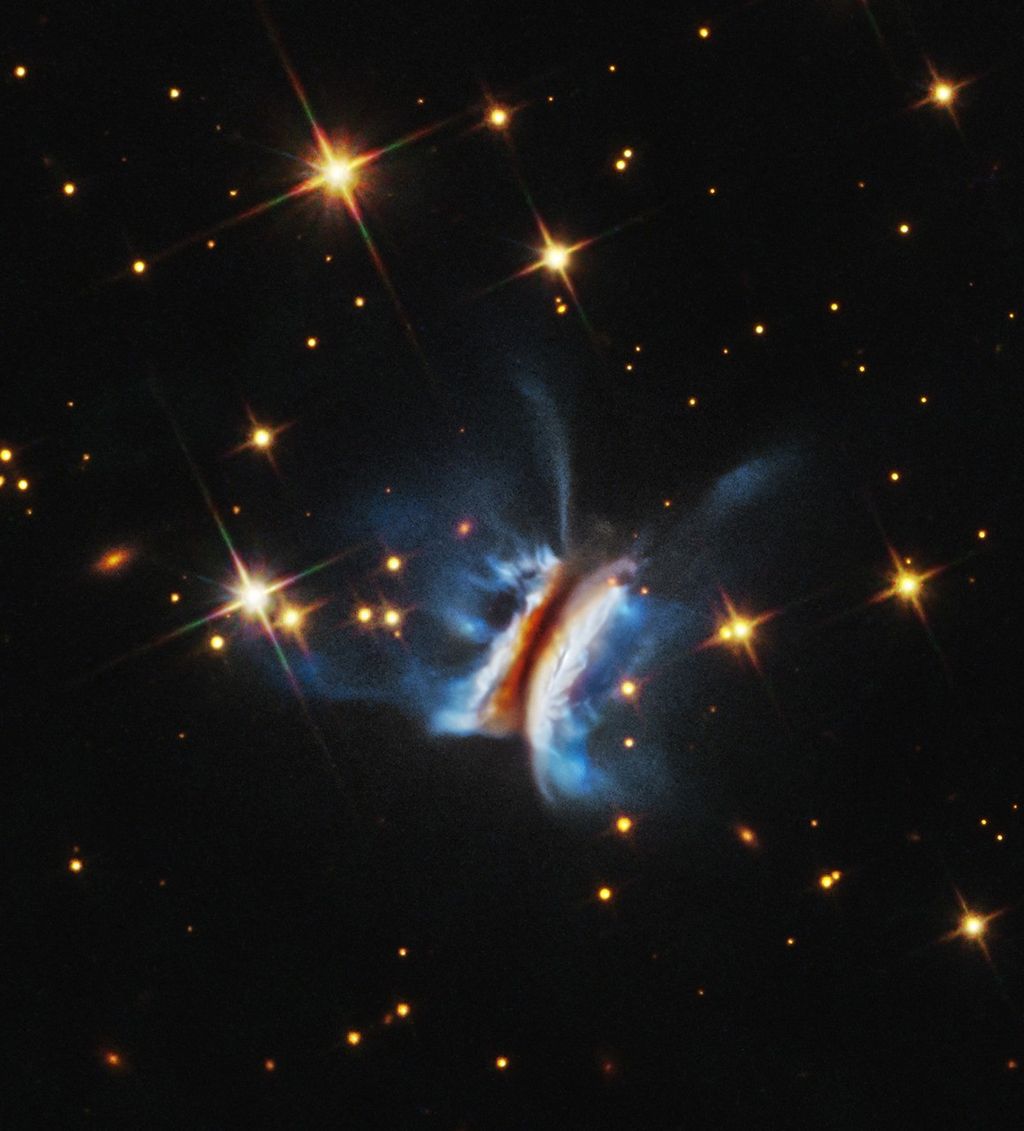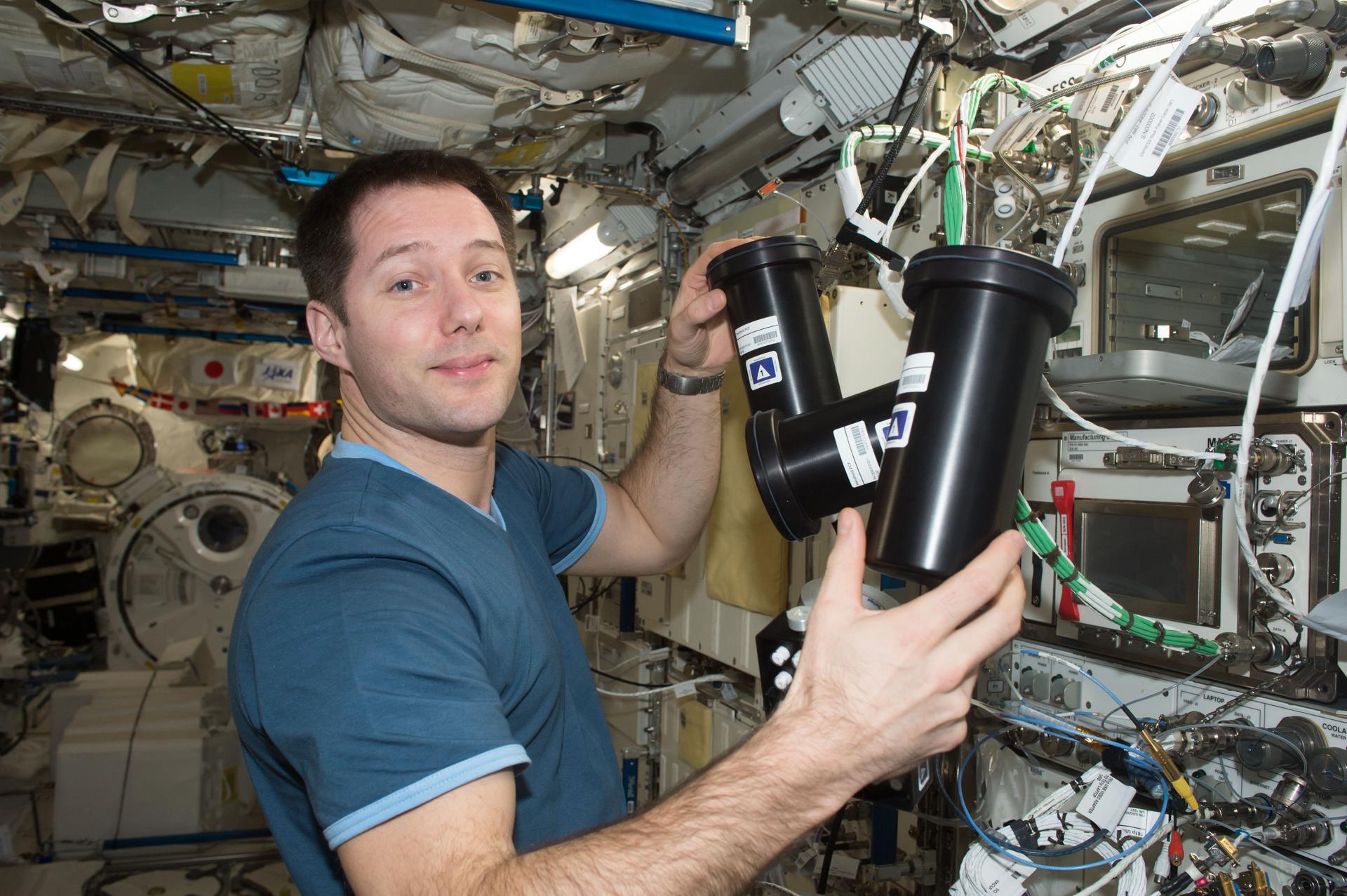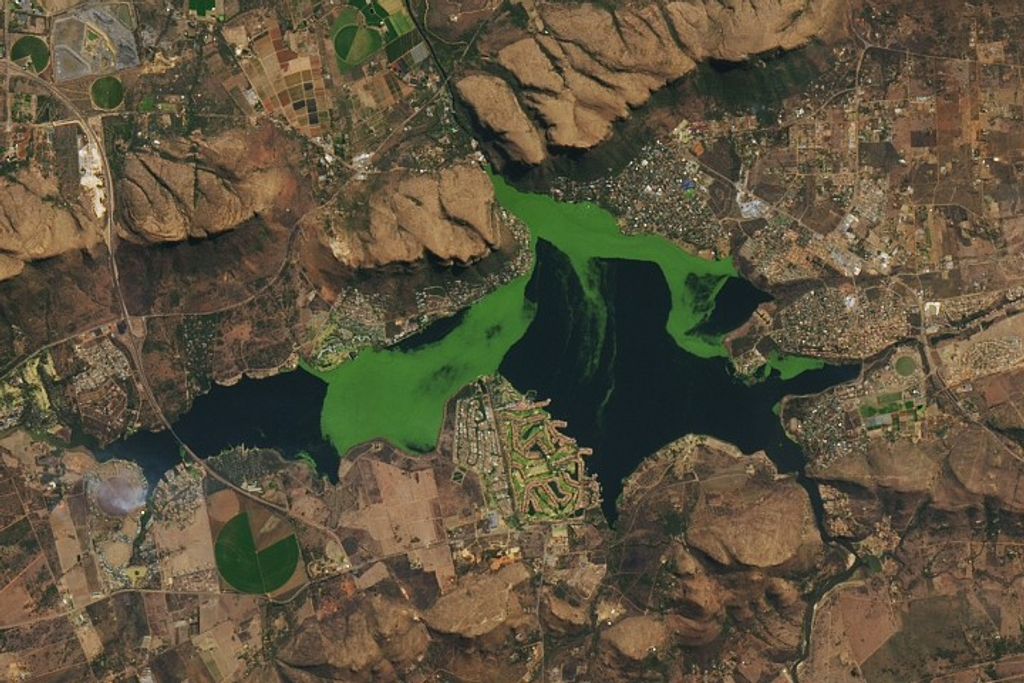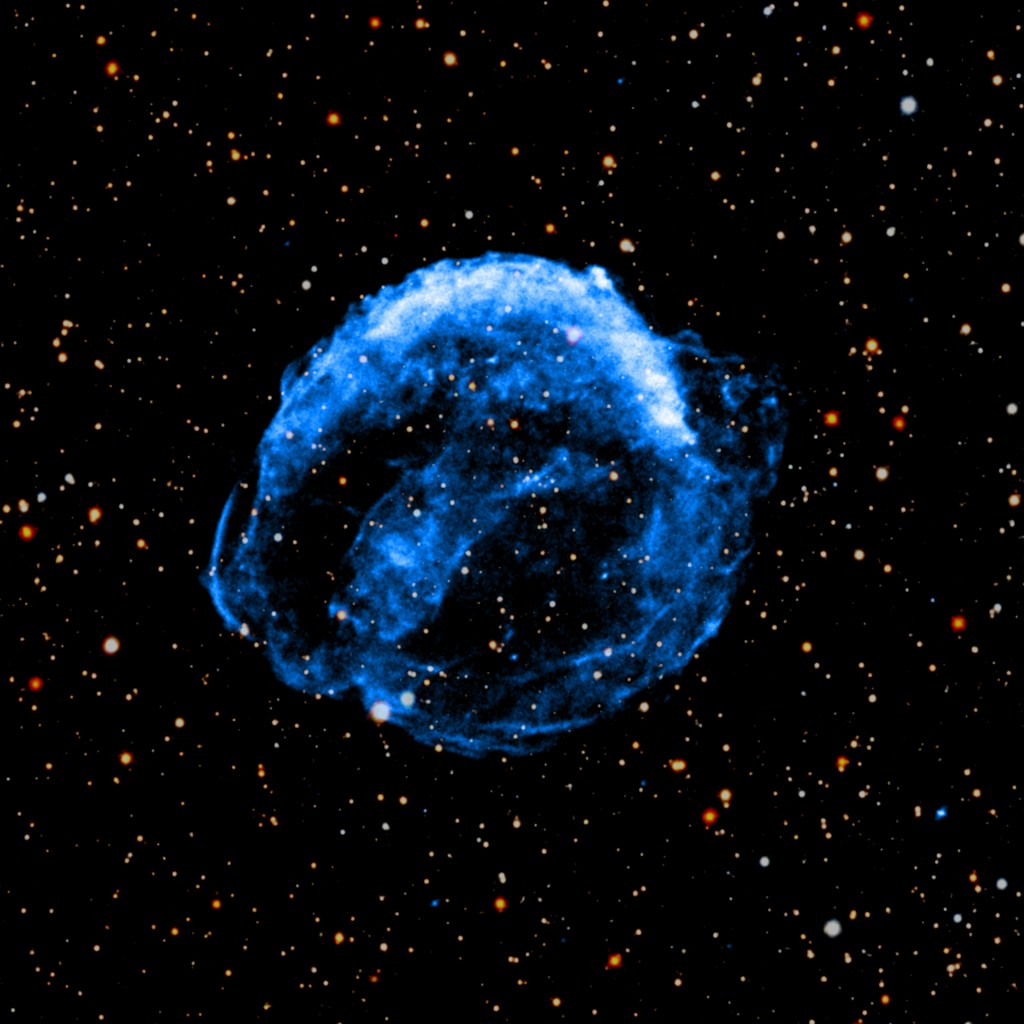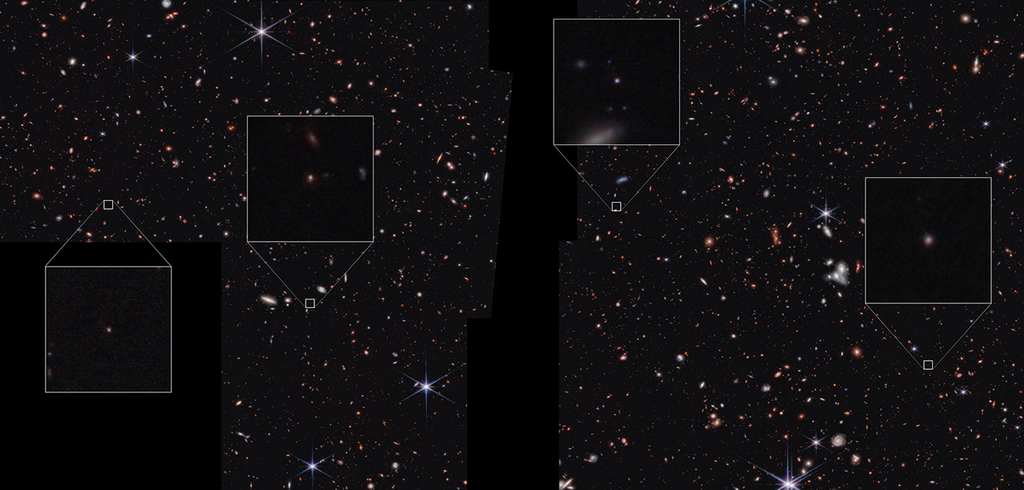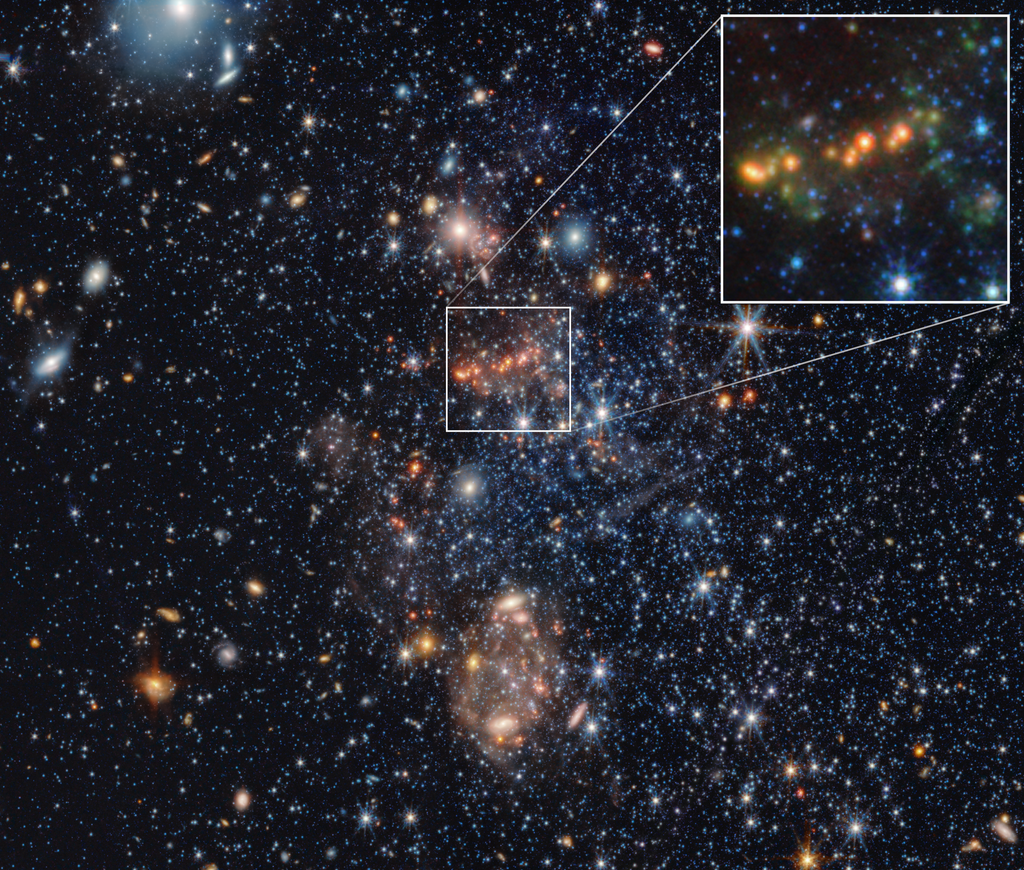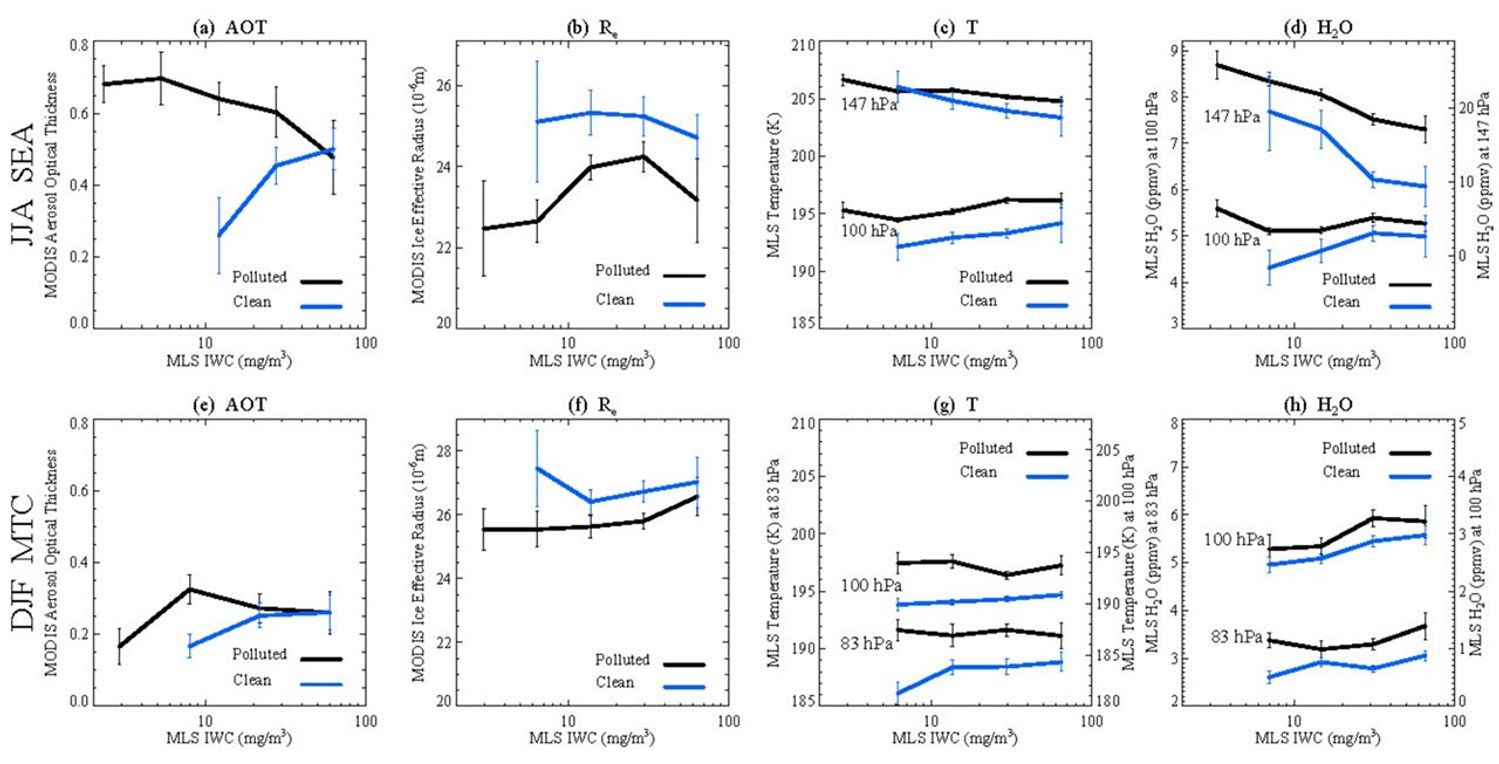Interactions Between Aerosol/Clouds/Water Vapor
The properties of the polluted clouds indicate a warming and moistening effect on air entering the stratosphere by the pollutants in Asia.
Satellite observations are analyzed to examine the correlations between aerosols and the tropical tropopause layer (TTL) temperature and water vapor. This study focuses on two regions, both of which are important pathways for the mass transport from the troposphere to the stratosphere and over which Asian pollution prevails: South and East Asia during boreal summer and the Maritime Continent during boreal winter. Using the upper-tropospheric carbon monoxide measurements from Aura's Microwave Limb Sounder (MLS) as a proxy of aerosols to classify ice clouds as polluted or clean, the authors find that polluted clouds have a smaller ice effective radius and a higher temperature and specific humidity near the tropopause than clean clouds. The increase in water vapor appears to be related to the increase in temperature, as a result of increased aerosols. Meteorological differences between the clouds cannot explain the differences in temperature and water vapor for the polluted and clean clouds.
MLS carbon monoxide data (at 215 hPa > 240 ppbv) was collected from the South and East Asia (SEA) during June-July-August (JJA) and over the maritime continent (MTC) during December-January-February (DJF).
The polluted clouds have greater aerosol optical thickness (AOT), smaller effective radius (Re), higher temperature (T) and water vapor (H2O) than clean clouds (defined by Aura MLS CO at 215 hPa < 100 ppbv).
The 215-hPa IWC serves as an index for convective strength. The binning of cloud properties as a function of 215-hPa IWC is important in two aspects. First, given the same convective strength, the different UT CO amounts in the polluted and clean clouds can be mostly attributed to differences in underlying pollution amount, as shown by AOT in figures A and E. Second, the influence of convective strength is held approximately constant when comparing the differences in Re, H2O, and T between polluted and clean cases binned in the same IWC intervals. Hence, the differences are more likely contributed by aerosol effects, rather than by differences in dynamics.
Reference:
Su, H., et. al., Enhanced Water Vapor Transport to the Stratosphere by Pollutants in Asia, J. Climate, 2010, Submitted.
10.13.2010
MLS
Aura’s Microwave Limb Sounder (MLS) instrument uses microwave emission to measure stratospheric temperature and upper tropospheric constituents. MLS also has unique capability to measure upper tropospheric water vapor in the…
Learn More